- Learning time
- 40 minutes
- First play time
- 120 minutes
Shinkansen: Zero Kei
Designed by: Israel Cendrero,Sheila Santos
In Shinkansen: Zero Kei, players collaborate to build the high-speed Tôkaidô railway across Japan in time for the 1964 Tokyo Olympics. But although everyone has a shared goal, only one player can win!
Although the game is reasonably straightforward in terms of what to do and how to do it, the English rulebook is a little opaque, skipping lightly past important details and the game only really making total sense when it explains the scoring – so let’s start with that. During the game’s five rounds you’ll be building a train made of cards: you start with two engine cards and in every round you insert a carriage card between them. At the end of the game you score points for how valuable your train is, which is defined by your carriage cards: they show the cities your train stops in, and each city may score points as long as it has track built next to it, and a hotel in it. There are three types of hotel – gold, black, white – and players will determine which hotels are most valuable. You also get more points if the position of the cities in your train closely matches the route on the board!
Each carriage card also has an action you can take on your turn. These are preparing the route, building track on it and constructing hotels in the various cities along the way. You’ll also be participating in the three Olympic venues: what this participation means thematically is a little vague, but mechanically helpful, as we’ll see.
Let’s take a look at a round, which is made of three phases.
In phase one, an event card is flipped. The event card dictates both the cost of building track for the current round and how many actions the players will have to spend: more actions is good, because actions are your means of interacting with the game and making progress! The event card might also offer an action itself, or have an end-of-round effect that comes into play at the end of phase three. Then a number of carriage cards are flipped over, ready to be claimed by the players.
Phase two is the claiming of carriage cards: in turn order, everyone claims and card for themselves and pays the cost. Claiming a card also pushes up the value of certain hotel types as well, tracked on the board.
Now down to business: phase three is the taking of actions. Using the game’s X-shaped markers to keep track, you can take as many actions as the event card allows – assuming you can afford them – by taking the actions listed on your carriage cards and engine (-you can also use other player’s engines, paying them instead of the bank). Page 8 of the rulebook lists every action and we won’t repeat it exhaustively here, but in brief, it’s the aforementioned preparing, laying of track, building of hotels, or gaining of yen – money is important, as free actions are relatively scarce. Note that some carriage cards don’t offer an action, but make other actions better: normally building a hotel costs three yen, for instance, but I might have a carriage card that makes this cheaper.
Another action is placing an Olympic Flame marker in one of the three Olympic venues, taking the reward shown there – converting yen to points, gaining yen, or moving one of the carriages in your train to a new position. At first, this seems like a little sideshow to the main event, but it’s important for two reasons: one is that for every flame marker you have in the Olympic venues, you’ll get one yen income in subsequent rounds. Two, the government would like you to contribute liberally: every flame marker you still have at the end of the game costs you minus three points!
After any end-of-round event takes place, the game moves on to the next round. When the fifth and final round is played, players tot up the value of their train as explained above: the cities it has on it, the value of the hotels at those cities, and – beware! – minus points for hotels at cities that the built track doesn’t actually reach. Olympic venues also score points for the player or players who’ve contributed the most markers. In short, Shinkansen: Zero Kei pulls you in different directions at the same time: strategically, you want your train to stop at the cities with the best hotels. Tactically, you want to keep yen rolling in as much as possible. And cannily, you want to manipulate your place in turn order at opportune moments!
The guru's verdict
-
Take That!
Take That!
Although there is no direct targeting of other players, it has a slightly cutthroat nature in how everything is a competition: the best action cards, the value of the hotels, the critical fight for turn order.
-
Fidget Factor!
Fidget Factor!
High on a first play, because understanding what you're trying to do can be almost as elusive as how you do it. But dropping significantly thereafter - although it's rarely a game where it feels like decisions suggest themselves - there's too much going on for that!
-
Brain Burn!
Brain Burn!
The long-term goals crystallise with familiarity: have the most valuable train, as defined by the hotels on the route and their worth. But the short-term also has demands and offerings too: whilst preparing, laying and constructing all cost money, they also give points. And your cashflow is very important too!
-
Again Again!
Again Again!
There's a lot of variety engineered into the game, with carriage cards and event cards ensuring some randomness, and player input completing it.



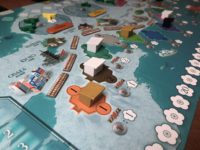
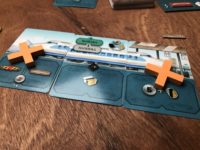

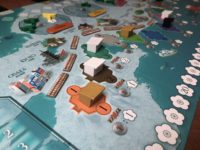
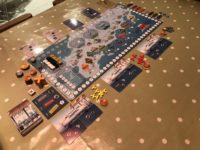


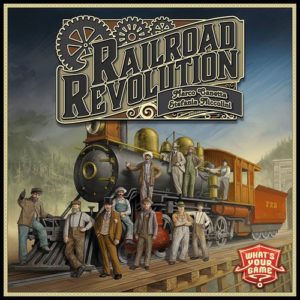

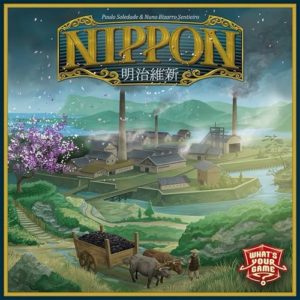
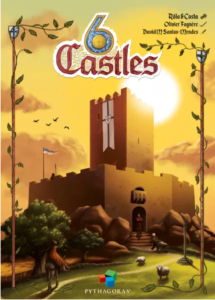
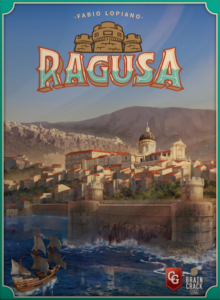
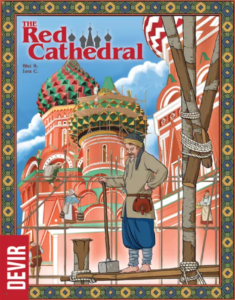
Sam says
Shinkansen: Zero Kei earns a relatively high complexity mark not because of its rules per se, but the combination of how they are presented - which is slightly opaque - and the manner the various cogs of play intersect, which can feel mystifying on your first visit. You're all building your own trains, and there's a slightly oddball idea in how they represent the route, with the order of the carriages matching the order of cities if possible. But beyond that, there's a shared incentive over the hotels: more than one player might be stopping in Nagoya, for instance, so uneasy alliances can be struck to prepare, lay track and build a hotel there. If one player is building gold hotels and pushing their value up, seemingly headed for triumphant victory, then others may tacitly come together to make other hotels more valuable. Do you feel like you have travelled back a half-century to clear rubble, blast tunnels, lay track and fabricate hotels? - Not really. Although the Tôkaidô route is clearly represented on the board, Zero Kei rests less on theme and more on a kind of weird interaction and quirky scoring system. But for all that it feels like a curio in some ways, it's also a kind of delight: beautifully presented, and behind the warm colours and lovely pieces there's a little cloak-and-dagger to proceedings.